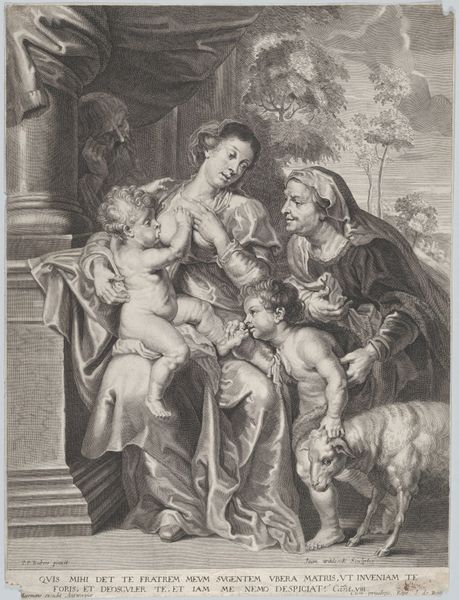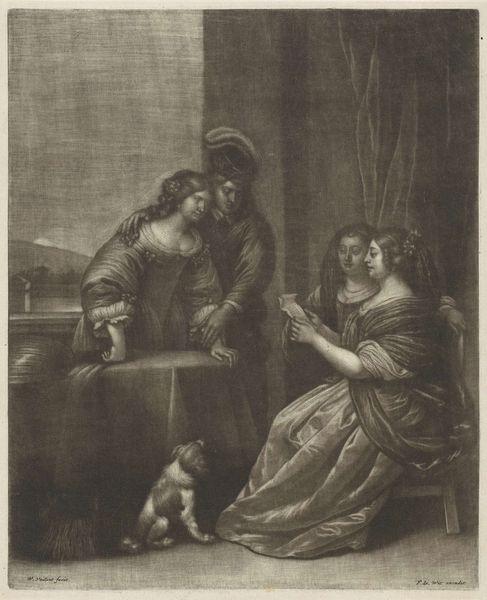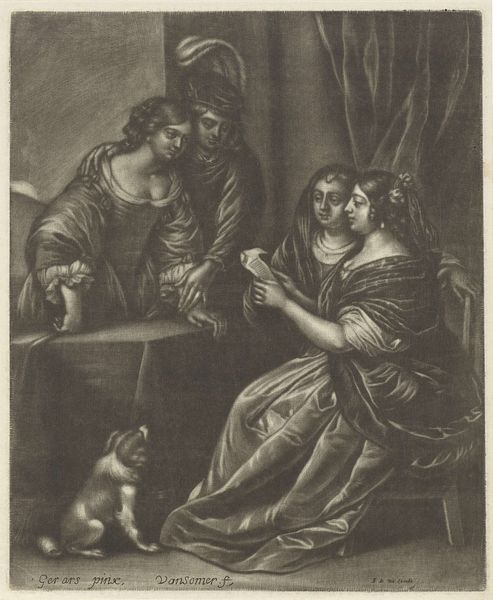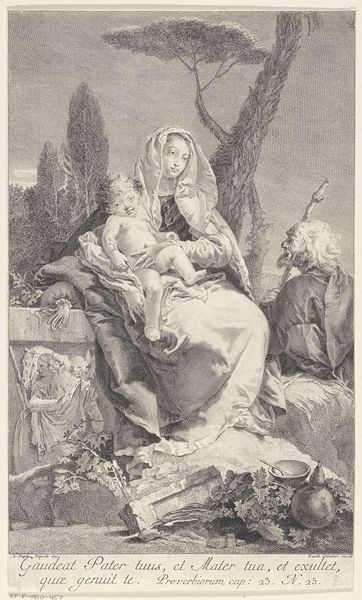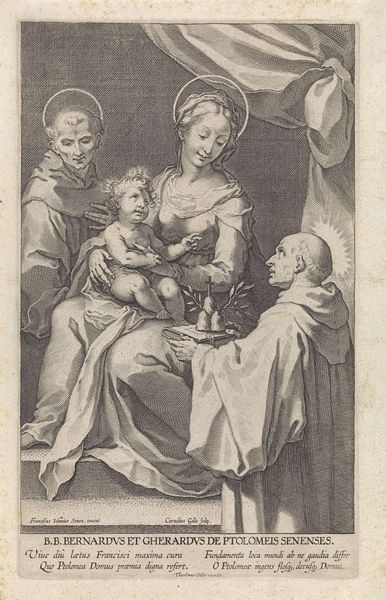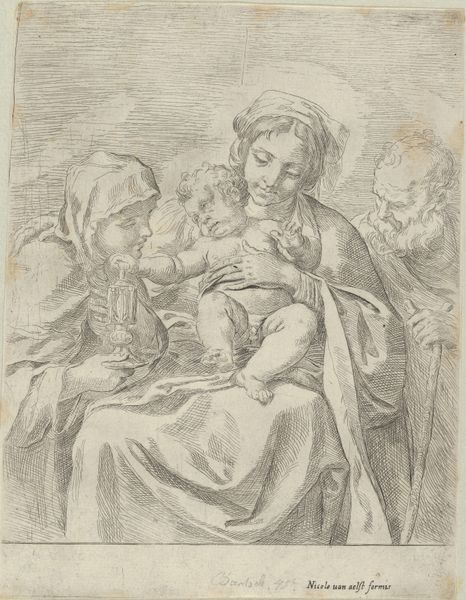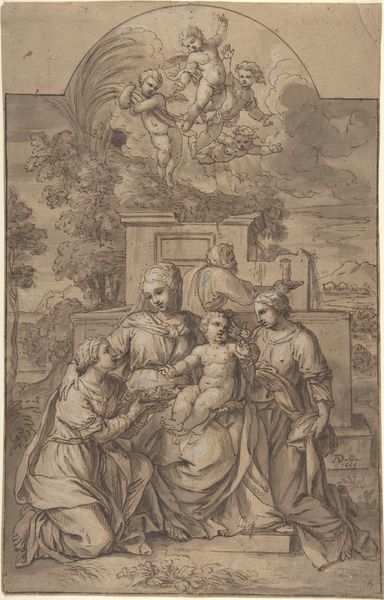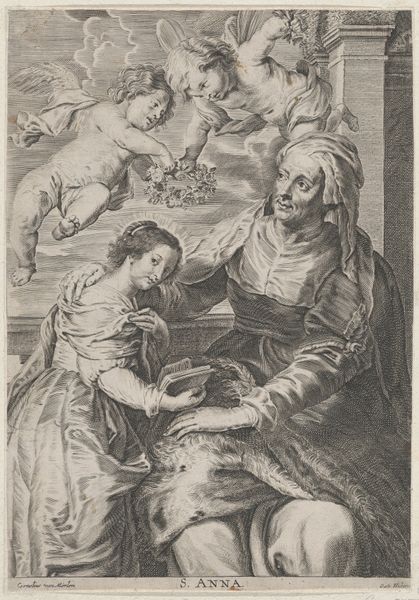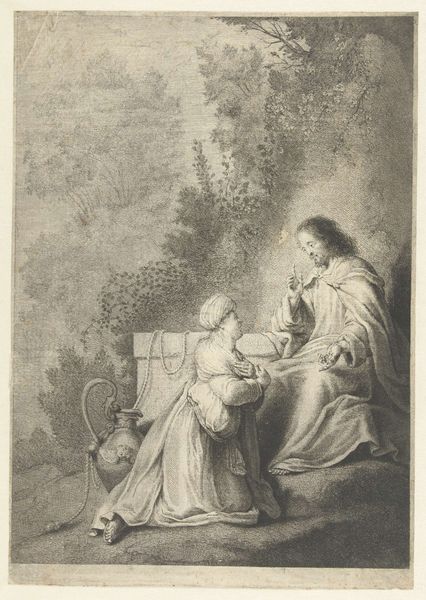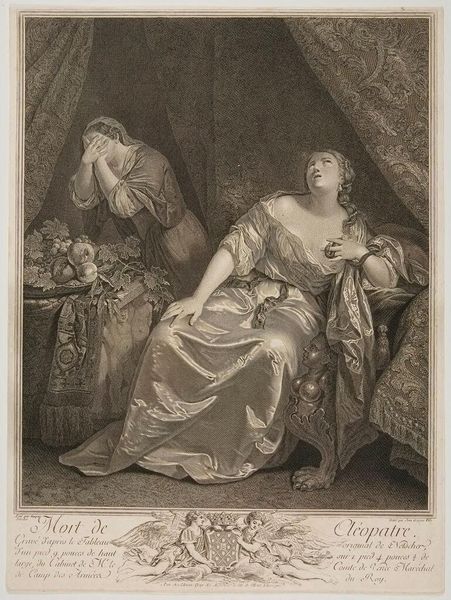
#
charcoal drawing
#
possibly oil pastel
#
oil painting
#
portrait reference
#
portrait head and shoulder
#
underpainting
#
painting painterly
#
portrait drawing
#
charcoal
#
watercolor
Copyright: Public Domain: Artvee
Curator: This is "The Education of Mary," painted by Peter Paul Rubens around 1630 to 1635. The oil on canvas presents a seemingly simple scene, yet the composition seems quite involved and intricate. What's your initial take? Editor: The shimmering quality of Mary's dress is what really grabs my attention. It's not just blue, but seems to be woven with silver or light itself! I'm curious, beyond the obvious religious narrative, how do you read this piece, especially in terms of its materiality and the making of it? Curator: Focus on that shimmer – what creates that effect? Rubens likely built up layers of thin glazes, each one subtly altering the color and light reflection of the one beneath. Think of the sheer labour involved in grinding the pigments, mixing the oils, and then applying them with such controlled, delicate brushwork. What does that level of painstaking craftsmanship tell us about the social and economic conditions of art production at the time? Editor: It definitely speaks to the patronage system, doesn't it? Someone commissioned this and had the resources to allow Rubens to dedicate significant time and effort. Also, the availability of those expensive pigments and fabrics suggests a culture of luxury and consumption. Curator: Precisely! Consider, too, that this wasn't mass-produced imagery. It was a singular object, a demonstration of skill, wealth, and a specific ideology – all intertwined in the material processes. How does understanding this impact your viewing experience? Editor: It makes me appreciate the painting as a constructed object. The sheer amount of labor transforms the raw materials into something more than just a religious image; it's a symbol of power and cultural values. It almost makes the painting even more luxurious to look at than the content depicts, even. Curator: Exactly. Seeing the labor, the materials, the consumption connected to this art enables us to critique it rather than simply accept it. The opulence becomes a statement, a choice loaded with significance. Editor: That really changes how I think about art history. It's not just about dates and names, but about the tangible conditions in which art comes into being. I'm now more critical and really observant of what went into crafting a masterpiece, thank you!
Comments
No comments
Be the first to comment and join the conversation on the ultimate creative platform.
